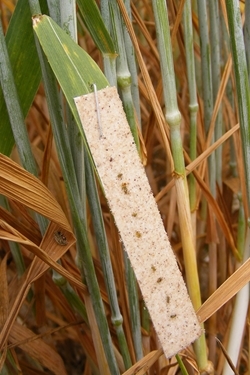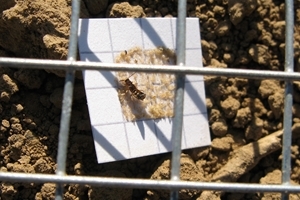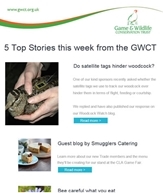Key points
- Biological control of cereal pests is desirable for farmers.
- The study examines the level of predation on different pest species in areas with different amounts of semi-natural habitats in the landscape, as well as effects of field boundary type.
- Levels of predation varied widely, but more semi-natural habitat in the landscape overall reduced cereal aphid infestations.
Background
“Biological control” is a term used to describe insects that are thought of as pests being eaten by other insects. This is ideal for farmers, as it reduces their need for treating crop pests such as aphids with chemicals and is thought of as more natural. However, measuring biological control is very difficult as it varies widely across fields, from year to year, and even depending where on the plant the control is needed. This paper explores a possible method for measuring natural pest control, and looks at whether the type of field boundary and the presence of semi-natural habitat in the surrounding landscape affects how much biological pest control is happening within that field.
What they did
 The study covered 18 sites across Hampshire and Dorset. Semi-natural habitat (SNH) in this study was either hedgerow or woodland. Grass margin field edges were used as control areas for comparison. At set points out into the fields from the edge (between 2 and 71m), the amount of natural predation by insects was measured by setting out particular bait stations either on the ground, or on the crops, containing both invertebrate larvae and seeds.
The study covered 18 sites across Hampshire and Dorset. Semi-natural habitat (SNH) in this study was either hedgerow or woodland. Grass margin field edges were used as control areas for comparison. At set points out into the fields from the edge (between 2 and 71m), the amount of natural predation by insects was measured by setting out particular bait stations either on the ground, or on the crops, containing both invertebrate larvae and seeds.
A variety of pest species (some surrogate species and some actual pests) were included at each measurement point, to represent prey species for many predatory insects. These included: bluebottle larvae, flour moth larvae, cereal aphid (Sitobion avenae), seeds of rough-stalked meadow-grass and the weedy annual fat-hen.
The proportion of prey items that were eaten in one day for animal prey, and seven days for seeds, was recorded and correlated with the type of habitat at the edge of that field, and the distance from it, as well as examining the effect of the total amount of SNH in the wider landscape (1km area).
What they found
 Predation was seen in all places, at different levels depending on the prey species and location. For example, predation of bluebottle larvae and fat-hen seeds increased with the proportion of “herbaceous areal” habitat (grass or wildflower areas in blocks or patches, rather than strips) in the study area. However, an increased proportion of “woody linear” habitat (hedgerows) reduced the predation of bluebottle larvae.
Predation was seen in all places, at different levels depending on the prey species and location. For example, predation of bluebottle larvae and fat-hen seeds increased with the proportion of “herbaceous areal” habitat (grass or wildflower areas in blocks or patches, rather than strips) in the study area. However, an increased proportion of “woody linear” habitat (hedgerows) reduced the predation of bluebottle larvae.
Overall, the total area of semi-natural habitat (SNH) in the landscape under study reduced the amount of aphid infestations in cereal crops. Predation of some prey increased when they were placed further away from SNH at the field edge, whereas predation of other species decreased with this distance. This probably reflects the range of different predators in different locations.
What does this mean?
Biological control exists within the fields studied, but it is variable and can be unreliable. Improvements in natural pest control would help allow more consistent control. Increased proportion of SNH in the landscape may help to reduce aphid pests in cereal crops.
Read the original abstract
Holland, J.M., McHugh, N.M., Moreby, S.J., & Jeanneret, P. (2017). Measuring biological control using surrogate prey items in winter wheat. IOBC/WPRS Bulletin, 122: 98-102.
 Does this page interest you?
Does this page interest you?
If the answer is yes, sign up for our FREE weekly newsletter and get all the latest GWCT research news, event invites and offers delivered straight to your inbox.
Sign up FREE to the Weekly GWCT Newsletter >